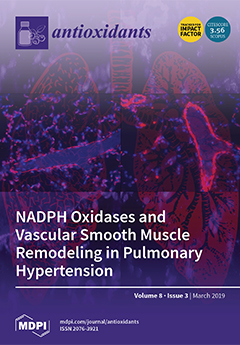Carotid body (CB) chemoreceptor cells sense arterial blood PO
2, generating a neurosecretory response proportional to the intensity of hypoxia. Hydrogen sulfide (H
2S) is a physiological gaseous messenger that is proposed to act as an oxygen sensor in CBs, although
[...] Read more.
Carotid body (CB) chemoreceptor cells sense arterial blood PO
2, generating a neurosecretory response proportional to the intensity of hypoxia. Hydrogen sulfide (H
2S) is a physiological gaseous messenger that is proposed to act as an oxygen sensor in CBs, although this concept remains controversial. In the present study we have used the H
2S scavenger and vitamin B
12 analog hydroxycobalamin (Cbl) as a new tool to investigate the involvement of endogenous H
2S in CB oxygen sensing. We observed that the slow-release sulfide donor GYY4137 elicited catecholamine release from isolated whole carotid bodies, and that Cbl prevented this response. Cbl also abolished the rise in [Ca
2+]
i evoked by 50 µM NaHS in enzymatically dispersed CB glomus cells. Moreover, Cbl markedly inhibited the catecholamine release and [Ca
2+]
i rise caused by hypoxia in isolated CBs and dispersed glomus cells, respectively, whereas it did not alter these responses when they were evoked by high [K
+]
e. The L-type Ca
2+ channel blocker nifedipine slightly inhibited the rise in CB chemoreceptor cells [Ca
2+]
i elicited by sulfide, whilst causing a somewhat larger attenuation of the hypoxia-induced Ca
2+ signal. We conclude that Cbl is a useful and specific tool for studying the function of H
2S in cells. Based on its effects on the CB chemoreceptor cells we propose that endogenous H
2S is an amplifier of the hypoxic transduction cascade which acts mainly by stimulating non-L-type Ca
2+ channels.
Full article






